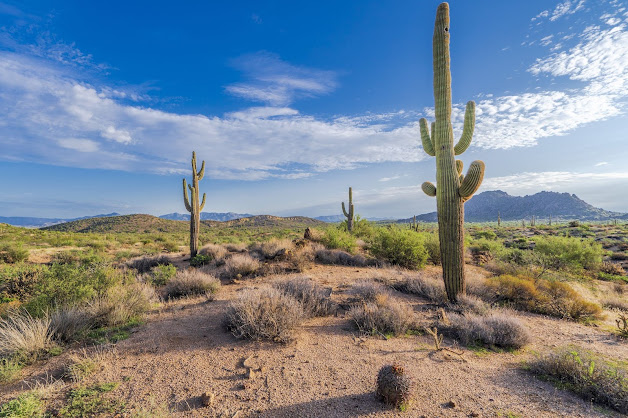Biomes are a method of dividing the Earth's surface into distinct areas. Climate patterns, soil types, and the animals and plants that live in a certain region all contribute to these divides. Biomes may be found both on land and in water. One or more biomes cover every square inch of the Earth's surface.
There are a few different approaches to calculating the number of biomes. Aquatic, forest, desert, tundra, and grassland are the five main kinds of biomes, according to some. Seasonal changes or animal and plant species may further separate these five kinds of biomes.
Biome of the Sea
Any area of the Earth that is covered with water is considered part of the aquatic biome. Freshwater and saltwater are also included. Freshwater biomes, marine biomes, wetland biomes, coral reef biomes, and estuaries are all types of aquatic biomes. The salt content of the water, the aquatic flora that dwell there, and the aquatic creatures that flourish there all contribute to the subdivisions.
Biome of the Forest
Plants, trees, animals, insects, and tiny creatures abound in the forest biome, which is the biggest. The forest biome's most distinguishing feature is its trees. The forest biome covers about 30% of the Earth's surface. The climate and kinds of trees found in the forest biome separate it. The rainforest biome, temperate biome, chaparral biome, alpine biome, and taiga biome are the subdivisions.
Biome of the Desert
The fact that the desert biome has relatively little vegetation is its most distinctive feature. Depending on where you are, the climate may be very severe. During the winters, the African deserts are scorching hot, while the rest of the year is mild. Cold deserts, such as those found in Antarctica, are also present. Throughout the winter, these deserts are very cold, and they are also frigid during the other seasons.
Tundra is a kind of biome.
Tundra biomes are the world's coldest environments. They're comparable to a cold desert, except they get less rain and have a variety of animals and vegetation. Despite the severe circumstances, the tundra biome has plant and animal habitats.
Biome of Grassland
Rolling slopes of different grasses make up the grassland biome. They get just enough rain to keep the grass alive, but not enough to support many trees. There are a few trees that will grow on grasslands, but they are kept under control by periodic wildfires. Savannas and temperate grasslands are the two kinds of grasslands.

Comments
Post a Comment